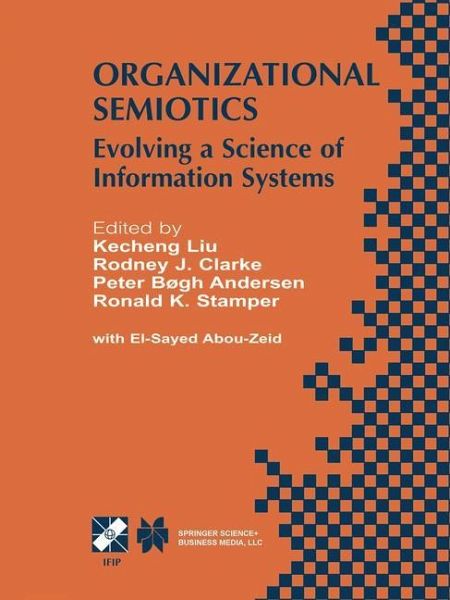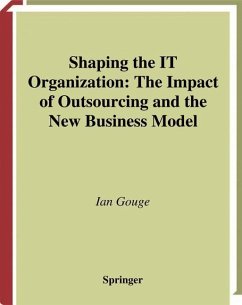
Organizational Semiotics
Evolving a Science of Information Systems IFIP TC8 / WG8.1 Working Conference on Organizational Semiotics: Evolving a Science of Information Systems July 23-25, 2001, Montreal, Quebec, Canada
Herausgegeben: Liu, Kecheng; Clarke, Rodney J.; Andersen, Peter Bøgh; Stamper, Ronald K.; Abou-Zeid, El-Sayed
Versandkostenfrei!
Versandfertig in 1-2 Wochen
77,99 €
inkl. MwSt.

PAYBACK Punkte
39 °P sammeln!
Organizational Semiotics: Evolving a Science of Information Systems covers such issues as: -Fundamental concepts such as 'information', 'data', 'message', 'communication', 'knowledge', 'organization', 'system' and so on; -Properties of signs vital to organizational functioning, such as their meanings, the intentions they express and the valuable social consequences they produce; -'Architecture' of organizations when they are viewed as information systems, based on their semiotics features; -Understanding language in organizational contexts, for example, the limitations on the language used to ...
Organizational Semiotics: Evolving a Science of Information Systems covers such issues as:
-Fundamental concepts such as 'information', 'data', 'message', 'communication', 'knowledge', 'organization', 'system' and so on;
-Properties of signs vital to organizational functioning, such as their meanings, the intentions they express and the valuable social consequences they produce;
-'Architecture' of organizations when they are viewed as information systems, based on their semiotics features;
-Understanding language in organizational contexts, for example, the limitations on the language used to conduct business affairs;
-The empirical study of communications for requirements elicitation;
-Applying semiotic categories (e.g. physical, empiric, syntactic, semantic, pragmatic, social) to various problems;
-Organizational knowledge representation;
-Business process re-engineering methods and the design of e-commerce systems.
-Fundamental concepts such as 'information', 'data', 'message', 'communication', 'knowledge', 'organization', 'system' and so on;
-Properties of signs vital to organizational functioning, such as their meanings, the intentions they express and the valuable social consequences they produce;
-'Architecture' of organizations when they are viewed as information systems, based on their semiotics features;
-Understanding language in organizational contexts, for example, the limitations on the language used to conduct business affairs;
-The empirical study of communications for requirements elicitation;
-Applying semiotic categories (e.g. physical, empiric, syntactic, semantic, pragmatic, social) to various problems;
-Organizational knowledge representation;
-Business process re-engineering methods and the design of e-commerce systems.














